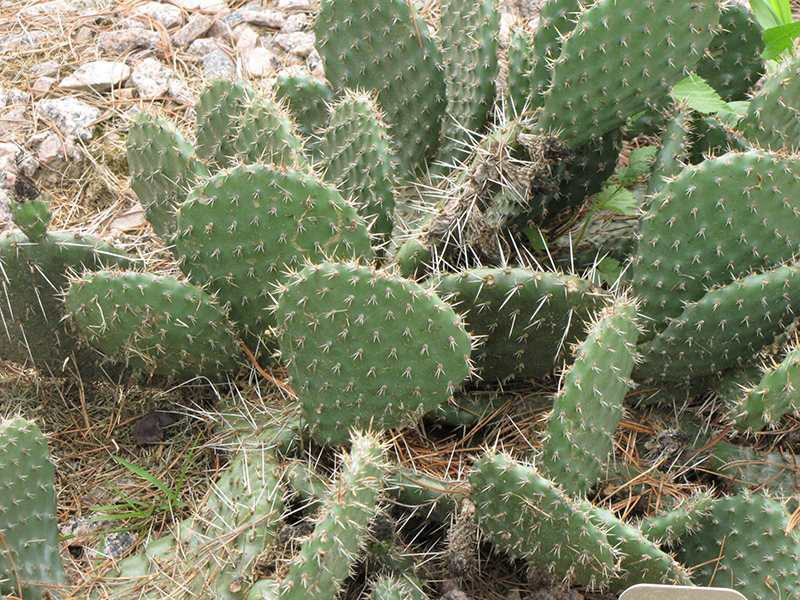Prickly Pear Cactus
Description
A low, prostrate, spreading cactus featuring papery bright yellow, or sometimes fuchsia flowers; may form colonies several feet across; reddish-purple fruit is covered with spines; attractive as a groundcover or in containers
Landscape Attributes
Prickly Pear Cactus is a tiny succulent evergreen plant with a spreading habit of growth that trails along the ground. It eventually becomes a spreading shrub-like plant with multiple 'branches' and stems. As a type of cactus, it has no true foliage; the body of the plant is wholly comprised of a linked series of spiny grayish green pads which are connected together to form the branches of the plant. With age, this plant will eventually develop a woody gray 'trunk' at its base.
Prickly Pear Cactus is recommended for the following landscape applications;
Planting & Growing
Prickly Pear Cactus will grow to be only 6 inches tall at maturity, with a spread of 3 feet. It has a low canopy. It grows at a medium rate, and under ideal conditions can be expected to live for approximately 20 years.
This plant should only be grown in full sunlight. It requires an extremely dry, well-drained growing location, and will usually die in standing water. It is considered to be drought-tolerant, and thus makes an ideal choice for a low-water garden or xeriscape application. Like most succulents and cacti, this plant prefers to grow in poor soils and should therefore never be fertilized. It is not particular as to soil pH, but grows best in sandy soils. It is quite intolerant of urban pollution, therefore inner city or urban streetside plantings are best avoided. This species is native to parts of North America. It can be propagated by division.
Prickly Pear Cactus makes a fine choice for the outdoor landscape, but it is also well-suited for use in outdoor pots and containers. Because of its spreading habit of growth, it is ideally suited for use as a 'spiller' in the 'spiller-thriller-filler' container combination; plant it near the edges where it can spill gracefully over the pot. Note that when grown in a container, it may not perform exactly as indicated on the tag - this is to be expected. Also note that when growing plants in outdoor containers and baskets, they may require more frequent waterings than they would in the yard or garden.

